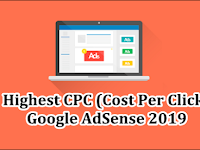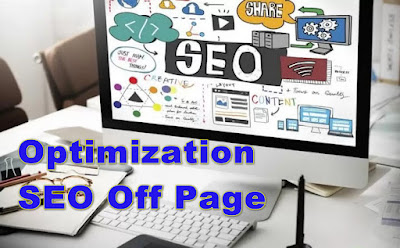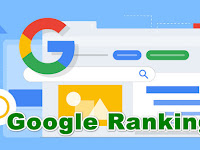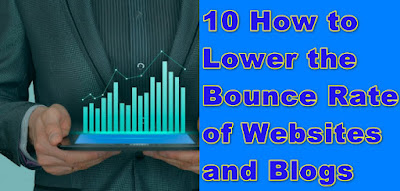List of the highest Google AdSense CPC 2024 - Google AdSense is an advertising collaboration service hosted by the giant Google company. From year to year, the number of AdSense publishers has increased along with soaring advertisers using Adwords services. One factor is the rapid development of internet users throughout the world.
With the CPC (Cost Per Click) system, Google sets the price per click for each ad that varies. There are many factors that can affect the CPC value of an advertisement, including country territory and keywords or keywords. Has the question arisen as to why the value of Indonesian CPC is smaller than that of the United States? Then which country has the Highest CPC value?
High and low CPC AdSense is influenced by many factors ranging from niche blogs and keywords. Keywords relate to niche blogs themselves. Google will find out what many content is discussed on your blog via keywords in searches that lead to your blog. Google AdSense will filter eligible ads to appear on a blog that was previously auctioned (determine what ads and click prices).
Advertisers also target their ads to blogs with certain themes that are relevant to their products. So it is recommended to create one niche blog only. In addition advertisers will target keywords that have high and tight search levels because their ads have more opportunities to see.
In addition, the budget of a company that advertises also affects the value of ad clicks. Companies like Amazon can spend large amounts of money just to advertise. Just try to check how much CPC is from Amazon ads. Different if the advertiser is an individual or only a small company. Of course they don't want to lose just to promote their products. Because of that, expensive CPC can be because the price for placing ads is also high.
If you talk about the broadcasting area or ad targeting, of course Indonesia will lose to America. Obviously, more developed American countries have higher economic levels. Competition between advocates is very strict. So it is clear that advertisers spend a lot of money winning opportunities against their competitors on the level of popularity of advertisements.
That's why they want to pay for their advertising. As a publisher, of course this can be a great opportunity to earn income by targeting certain countries. Then which countries have the most expensive advertising (highest CPC)? Look at the CPC averages for each country below.
Here is a list of the highest Google AdSense CPC 2024. This list will continue to be updated for the highest cpc list for the following year
It can be seen from 134 country lists based on Google AdSense CPC, Indonesia is ranked in the top 98. Indonesia's CPC is smaller than the other two Southeast Asian countries, namely Singapore and Thailand. In other words, Indonesia has a low CPC average. It is even possible that the most expensive advertising prices in Indonesia are still below the average CPC of America. That's the List of the Highest Google AdSense CPC 2024, which I can share this time. May be useful.
With the CPC (Cost Per Click) system, Google sets the price per click for each ad that varies. There are many factors that can affect the CPC value of an advertisement, including country territory and keywords or keywords. Has the question arisen as to why the value of Indonesian CPC is smaller than that of the United States? Then which country has the Highest CPC value?
What are the factors that make CPC Google AdSense ads different for each country?
High and low CPC AdSense is influenced by many factors ranging from niche blogs and keywords. Keywords relate to niche blogs themselves. Google will find out what many content is discussed on your blog via keywords in searches that lead to your blog. Google AdSense will filter eligible ads to appear on a blog that was previously auctioned (determine what ads and click prices).
Advertisers also target their ads to blogs with certain themes that are relevant to their products. So it is recommended to create one niche blog only. In addition advertisers will target keywords that have high and tight search levels because their ads have more opportunities to see.
In addition, the budget of a company that advertises also affects the value of ad clicks. Companies like Amazon can spend large amounts of money just to advertise. Just try to check how much CPC is from Amazon ads. Different if the advertiser is an individual or only a small company. Of course they don't want to lose just to promote their products. Because of that, expensive CPC can be because the price for placing ads is also high.
Which country has the highest CPC?
If you talk about the broadcasting area or ad targeting, of course Indonesia will lose to America. Obviously, more developed American countries have higher economic levels. Competition between advocates is very strict. So it is clear that advertisers spend a lot of money winning opportunities against their competitors on the level of popularity of advertisements.
That's why they want to pay for their advertising. As a publisher, of course this can be a great opportunity to earn income by targeting certain countries. Then which countries have the most expensive advertising (highest CPC)? Look at the CPC averages for each country below.
List of the highest Google AdSense CPC 2024
Here is a list of the highest Google AdSense CPC 2024. This list will continue to be updated for the highest cpc list for the following year
| Rating | Country |
|---|---|
| 1 | Australia |
| 2 | Amerika Serikat |
| 3 | Norwegia |
| 4 | Britania Raya |
| 5 | Selandia Baru |
| 6 | Afrika Selatan |
| 7 | Kanada |
| 8 | Belanda |
| 9 | Swedia |
| 10 | Swiss |
| 11 | Denmark |
| 12 | Jerman |
| 13 | Belgia |
| 14 | Singapura |
| 15 | Nigeria |
| 16 | Kuwait |
| 17 | Jepang |
| 18 | Irlandia |
| 19 | Finlandia |
| 20 | Perancis |
| 21 | Luksemburg |
| 22 | Malaysia |
| 23 | Austria |
| 24 | Hong Kong |
| 25 | Israel |
| 26 | Islandia |
| 27 | Slovenia |
| 28 | Slovakia |
| 29 | Uni Emirat Arab |
| 30 | Italia |
| 31 | Qatar |
| 32 | Botswana |
| 33 | Estonia |
| 34 | Spanyol |
| 35 | Bermuda |
| 36 | Ciprus |
| 37 | Russia |
| 38 | Ceko |
| 39 | Puerto Riko |
| 40 | Yunani |
| 41 | Arab Saudi |
| 42 | Albania |
| 43 | Oman |
| 44 | Latvia |
| 45 | Portugal |
| 46 | Lebanon |
| 47 | Kenya |
| 48 | Bahamas |
| 49 | Malta |
| 50 | Bahrain |
| 51 | Ghana |
| 52 | Mozambik |
| 53 | Jamaika |
| 54 | Zimbabwe |
| 55 | Hungaria |
| 56 | Brazil |
| 57 | Armenia |
| 58 | Tanzania |
| 59 | Rwanda |
| 60 | Trinidad dan Tobago |
| 61 | Lithuania |
| 62 | Ukraina |
| 63 | Chili |
| 64 | India |
| 65 | Taiwan |
| 66 | Panama |
| 67 | Polandia |
| 68 | Republik Dominika |
| 69 | Kosta Rika |
| 70 | Korea Selatan |
| 71 | Zambia |
| 72 | Uganda |
| 73 | Kongo (DRC) |
| 74 | Jordania |
| 75 | Maroko |
| 76 | Argentina |
| 77 | Meksiko |
| 78 | Makau |
| 79 | Thailand |
| 80 | Irak |
| 81 | Namibia |
| 82 | Kolombia |
| 83 | MonaKo |
| 84 | Ethiopia |
| 85 | Kroasia |
| 86 | Kazakhstan |
| 87 | Angola |
| 88 | Bulgaria |
| 89 | Filipina |
| 90 | Azerbaijan |
| 91 | Kamerun |
| 92 | Peru |
| 93 | Turki |
| 94 | Algeria |
| 95 | China |
| 96 | Georgia |
| 97 | Uruguay |
| 98 | Indonesia |
| 99 | Belarusia |
| 100 | Romania |
| 101 | Mesir |
| 102 | Moldova |
| 103 | El Salvador |
| 104 | Republik Makedonia (FYROM) |
| 105 | Ekuador |
| 106 | Gibraltar |
| 107 | Brunei Darussalam |
| 108 | Antillen Belanda |
| 109 | Serbia |
| 110 | Bolivia |
| 111 | Yaman |
| 112 | Palestina |
| 113 | Tunisia |
| 114 | Sri Lanka |
| 115 | Venezuela |
| 116 | Afghanistan |
| 117 | Kamboja |
| 118 | Senegal |
| 119 | Nepal |
| 120 | Sudan |
| 121 | Guatemala |
| 122 | Maladewa |
| 123 | Libya |
| 124 | Pantai Gading |
| 125 | Benin |
| 126 | Myanmar (Burma) |
| 127 | Bangladesh |
| 128 | Bosnia dan Herzegovina |
| 129 | Mauritius |
| 130 | Laos |
| 131 | Paraguay |
| 132 | Vietnam |
| 133 | Pakistan |
| 134 | Mongolia |
It can be seen from 134 country lists based on Google AdSense CPC, Indonesia is ranked in the top 98. Indonesia's CPC is smaller than the other two Southeast Asian countries, namely Singapore and Thailand. In other words, Indonesia has a low CPC average. It is even possible that the most expensive advertising prices in Indonesia are still below the average CPC of America. That's the List of the Highest Google AdSense CPC 2024, which I can share this time. May be useful.






















